How To Sharpen a Knife with a Stone for Beginners
- January 30, 2024
- 0 comment
The sharpness of a knife is not just a matter of convenience but a cornerstone of kitchen mastery. For beginners, the art of sharpening a knife using a whetstone can seem like a daunting task, shrouded in mystery and old-world craftsmanship. This guide aims to illuminate this age-old skill, simplifying it into an easily understandable and executable practice for novices. We delve into the heart of sharpening techniques, using traditional stones a method revered by chefs and culinary enthusiasts for its precision and meditative quality. The journey from a blunt blade to a razor-sharp chef’s tool is both a practical necessity and a path to a deeper connection with your culinary instruments. Here, you will learn not just the ‘how’ but also the why of knife sharpening, unraveling the secrets behind choosing the right stone, mastering the angle and technique, and maintaining your blade for years of efficient, safe, and enjoyable cooking experiences.
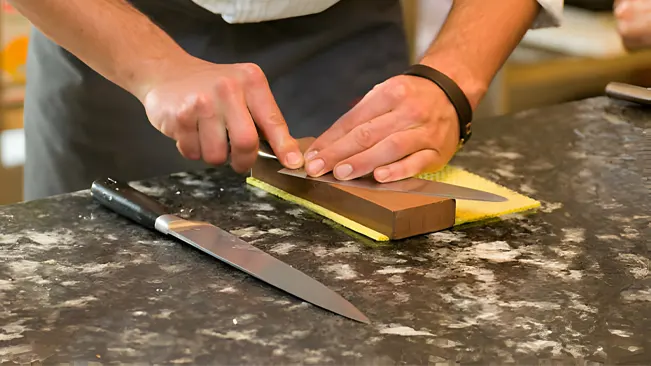
Why Sharpening a Knife is Important
Sharpening a knife is a crucial aspect of kitchen safety and efficiency. A well-honed blade enables smoother, more precise cuts, thereby enhancing the cooking experience.
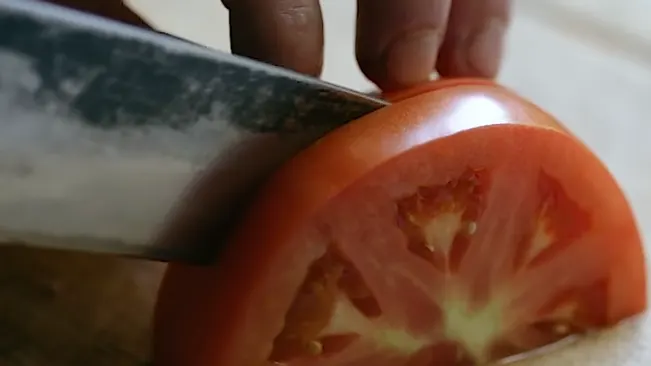
This precision not only contributes to the aesthetics of the food preparation but also ensures consistent cooking times and results. On the other hand, using a dull knife poses a significant risk. It demands extra force to cut through ingredients, which can lead to a loss of control and increase the likelihood of accidents.
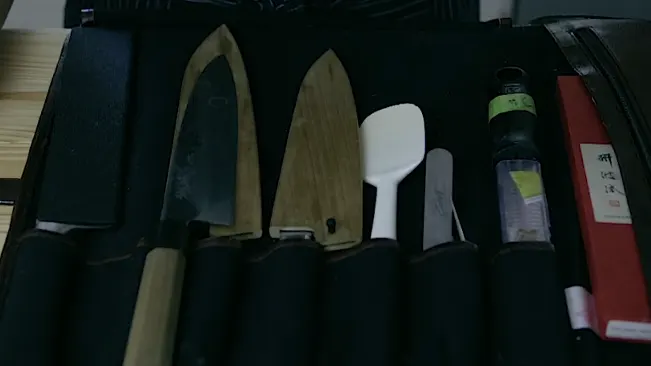
Moreover, a dull knife can bruise or damage ingredients rather than slicing cleanly through them, impacting the quality and presentation of the dish. Therefore, maintaining a sharp knife is not just about making the task of cutting easier it’s about ensuring safety in the kitchen and achieving the best possible results in food preparation.
Overview of Knife Sharpening Stones
Knife sharpening stones, essential tools for maintaining a sharp blade, encompass a variety of types and materials, each suited to different stages of the sharpening process. Common types include whetstones, oil stones, and diamond stones. Whetstones, often soaked in water before use, are popular for their gentle sharpening action. Oil stones, requiring oil for lubrication, are known for their durability and ability to produce a fine edge.
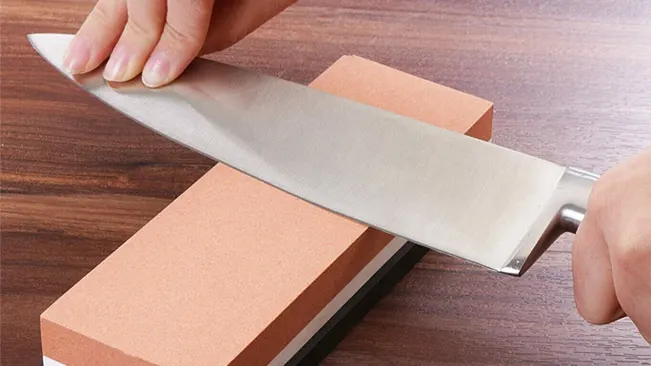
Diamond stones, coated with tiny industrial diamonds, stand out for their fast cutting speed and longevity. These stones also come in a range of grit sizes: coarse grits are used for repairing or reshaping dull blades, medium grits for refining the edge, and fine grits for honing to achieve that razor-sharp finish. While traditional sharpening stones were made from natural materials, modern advancements have led to the development of synthetic stones. These synthetic versions offer a more consistent grain and composition, providing reliable performance and durability, making them a favored choice among professionals and home cooks alike.
Step-by-Step Guide for Beginners
Step 1. Preparing the Stone
Depending on the type of sharpening stone you’re using, preparation is key. For water stones, immerse them in water until they’re thoroughly soaked this can take from a few minutes to up to 15 minutes, depending on the stone. For oil stones, apply a thin layer of sharpening oil evenly across the surface. This preparation step ensures that the stone works effectively, reducing friction and preventing metal filings from clogging the stone’s pores.
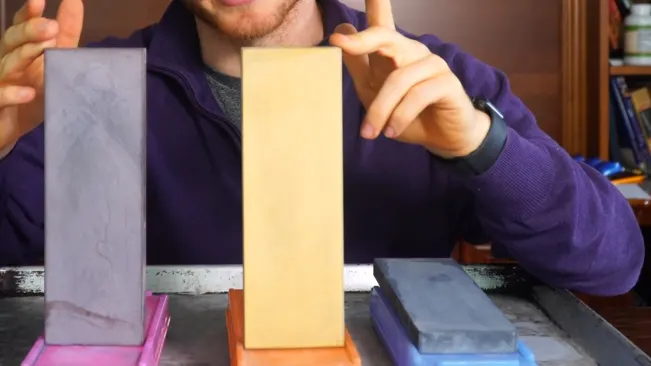
Step 2. Correct Angle and Technique
Position the knife at approximately a 20-degree angle against the stone. This angle is crucial for most kitchen knives. Start at the base of the knife and glide it across the stone in a sweeping motion, moving towards the tip. Ensure that the entire edge, from the heel to the tip, contacts the stone with each stroke. It’s important to maintain this angle consistently for an even sharpening.
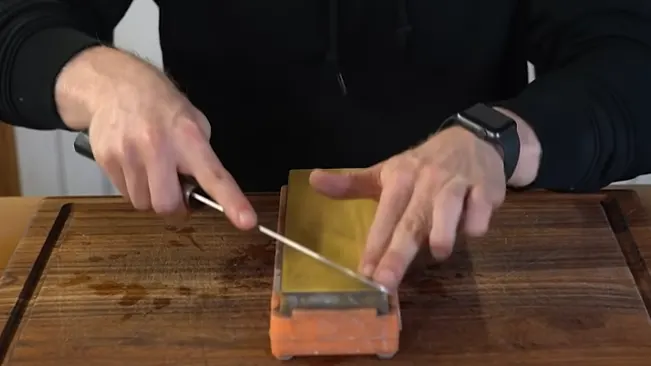
Step 3. Consistency and Pressure
Apply moderate, steady pressure as you move the knife across the stone. Avoid pressing down too hard, as this can damage the blade. Instead, let the stone do the work. Consistency in both angle and pressure is vital for obtaining a uniformly sharp edge. Repeat the strokes the same number of times on both sides of the blade to maintain balance in the sharpening process.
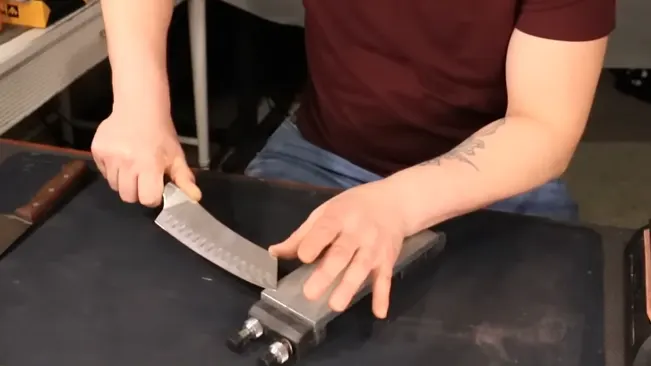
Step 4. Safety Precautions
Safety should be your top priority. Keep your fingers away from the blade’s edge and use a non-slip base under the stone to prevent it from moving. Ensure your workspace is well-lit so you can see what you’re doing clearly. Also, focus on your task distractions can lead to accidents.
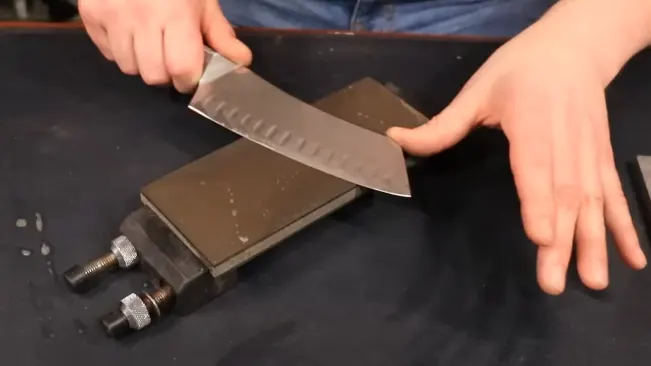
Step 5. Finishing Touches and Maintenance
After sharpening, it’s important to hone the edge with a fine grit stone or a honing rod to align any micro-teeth on the blade’s edge, enhancing its sharpness and longevity. Finally, clean the knife and stone to remove any metal filings. Regular maintenance of your knives with periodic sharpening and honing will keep them in top condition, making kitchen tasks easier and safer.
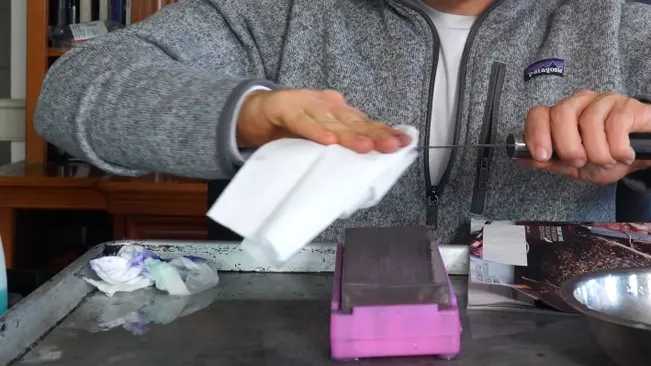
Common Mistakes to Avoid
In the world of knife sharpening, a few common mistakes stand out, often turning a simple task into a blade-damaging ordeal. One of the most crucial errors is sharpening at an incorrect angle, which can dramatically alter the blade’s shape and effectiveness. It’s a fine line between too steep and too shallow, and finding that perfect angle is key to maintaining your knife’s edge.
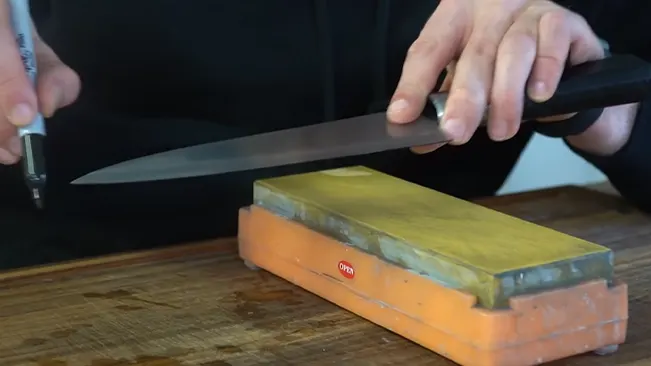
Overzealous sharpening is another pitfall too much enthusiasm can wear down the blade prematurely, stripping years off its life. Equally important is the maintenance of your sharpening stone neglecting to flatten a stone that’s seen a lot of use can result in uneven sharpening, leaving your knife with a less-than ideal edge. Additionally, it’s essential to recognize that not all knives are created equal.
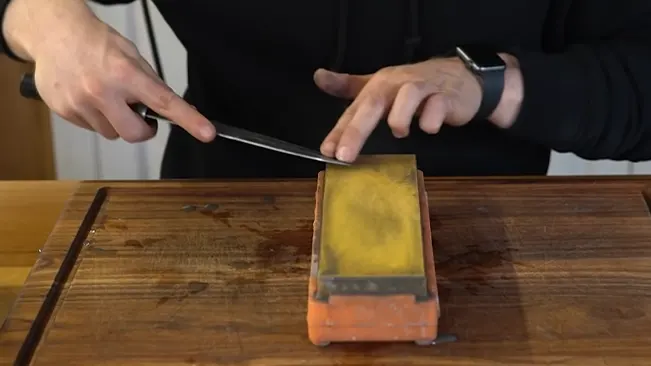
The type and material of your knife should guide your choice of stone. For example, a softer steel knife may not require an aggressive coarse stone, while a harder steel might need something more robust than a fine grit stone. Understanding these nuances is vital in avoiding the common blunders that can turn sharpening from a skillful art into a regrettable mistake.
Maintenance of Sharpening Stones
Maintaining sharpening stones is an often overlooked but essential aspect of knife care. After each use, it’s important to thoroughly clean the stone to remove the accumulated metal filings and debris. For water stones, a rinse under running water is usually sufficient, while oil stones might require a bit of mild soap to break down the oil and release the metal particles.
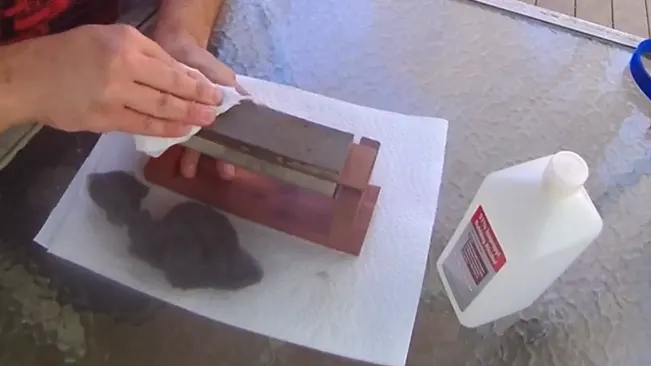
After cleaning, the stone should be dried completely and stored in a dry, well ventilated area to prevent any moisture-related damage or mold growth. Over time and with repeated use, sharpening stones can develop uneven surfaces or dents, which can lead to inconsistent sharpening of knives. To counter this, periodic flattening of the stone is necessary. This can be done using a flattening stone or a specially designed tool to ensure that the sharpening surface remains level and effective. Proper maintenance not only extends the life of the sharpening stone but also ensures that it continues to provide a consistent, sharp edge on your knives, making your cutting tasks more efficient and safer.
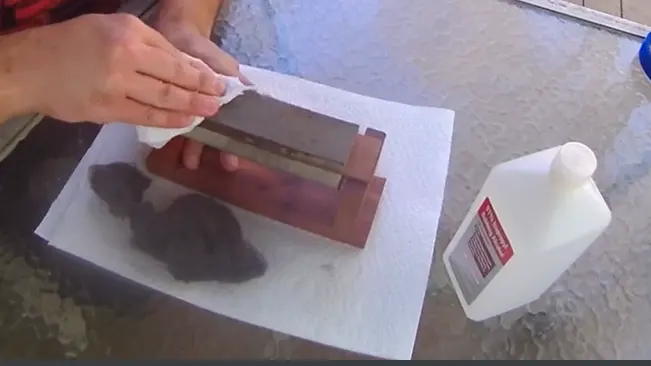
Pros and Cons
Pros
- Sharpening stones allow for a high degree of control, enabling precise sharpening and the ability to create a fine edge.
- They can accommodate a wide range of knives, from kitchen blades to specialized tools.
- Once purchased, a good quality stone lasts a long time, making it a cost-effective solution in the long run.
- Learning to use a sharpening stone enhances your skill set, providing a deeper understanding of your tools.
- Different types and grits of stones allow for customizing the sharpening process according to the specific needs of the blade.
Cons
- Properly using a sharpening stone requires practice and skill, which can be challenging for beginners.
- Time-Consuming: Compared to automatic sharpeners, manual sharpening with a stone takes more time and effort.
- The stones themselves require regular cleaning, flattening, and proper storage to maintain their effectiveness.
- Incorrect technique can lead to uneven sharpening or, worse, damage to the blade.
- Without experience, it can be difficult to maintain a consistent angle and pressure, leading to less than optimal sharpening results.
Conclusion
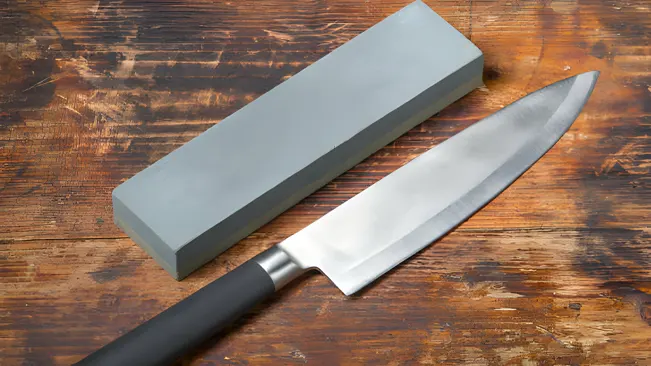
Mastering the art of knife sharpening with a stone is an invaluable skill, particularly for those passionate about cooking. This ancient technique goes beyond mere utility, blending craft and precision to elevate your culinary practice. For beginners, the journey might start with tentative strokes on a stone, but with patience and consistent practice, it evolves into a confident, almost meditative rhythm, enhancing not only the sharpness of the blade but also the safety and pleasure of cooking. A well-sharpened knife is a joy to use it slices effortlessly, reduces the effort involved in prep work, and minimizes the risk of accidents that come with using a dull blade. As you hone this skill, you’ll find it adds a new dimension to your cooking, a tangible connection to every meal you prepare. Furthermore, the satisfaction derived from sharpening your own knives is immensely rewarding it’s a personal touch that brings a sense of accomplishment and a deeper appreciation for the tools of the culinary trade. So, whether you’re a seasoned chef or just starting out, embracing the art of sharpening your knives with a stone is a step towards a more engaged, safe, and enjoyable cooking experience.
FAQs
- What types of sharpening stones are available?
There are primarily three types: water stones, oil stones, and diamond stones, each with unique characteristics suitable for different sharpening needs. - How often should I sharpen my knives?
The frequency depends on usage, but typically, knives should be sharpened every few months or when you notice a decrease in cutting efficiency. - What is the ideal angle for sharpening most kitchen knives?
A 20-degree angle is generally recommended for sharpening most Western-style kitchen knives. - How do I know if my knife is sharp enough?
A sharp knife should easily cut through paper or ripe tomatoes without resistance. - Can all knives be sharpened with a stone?
Most kitchen knives can be sharpened with a stone, but serrated knives and some specialty blades may require different tools or techniques. - Why is it important to flatten sharpening stones?
Flattening ensures the stone’s surface is level, which is crucial for evenly sharpening the entire blade. - How do I flatten my sharpening stone?
Use a flattening stone or a flattening tool designed for this purpose, rubbing it against the stone’s surface until it’s even. - Can I use oil on a water stone or water on an oil stone?
No, it’s important to use the correct lubricant for your stone type: water for water stones and oil for oil stones. - How do I store my sharpening stones properly?
After cleaning and drying, store them in a dry, ventilated place to prevent moisture damage. - Is it necessary to soak all water stones before use?
While many water stones require soaking, some are splash-and-go. Always check the manufacturer’s instructions for your specific stone.
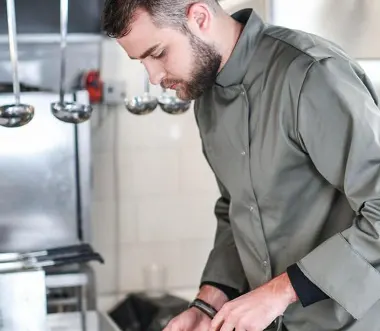
Jack Williams
As the founder and chief reviewer at KnifeCritic, my extensive experience in professional kitchens has honed my expertise in boning and fillet knives, making me a trusted authority in the culinary tool industry. KnifeCritic was born out of a passion for empowering both professional chefs and home cooks with in-depth, reliable reviews and insights into the world of specialized kitchen knives. Our platform is dedicated to demystifying the selection and maintenance of culinary tools, ensuring that high-quality knives are accessible to everyone passionate about cooking. Through KnifeCritic, I strive to enhance the cooking experience by providing valuable information that elevates the preparation and final presentation of dishes.

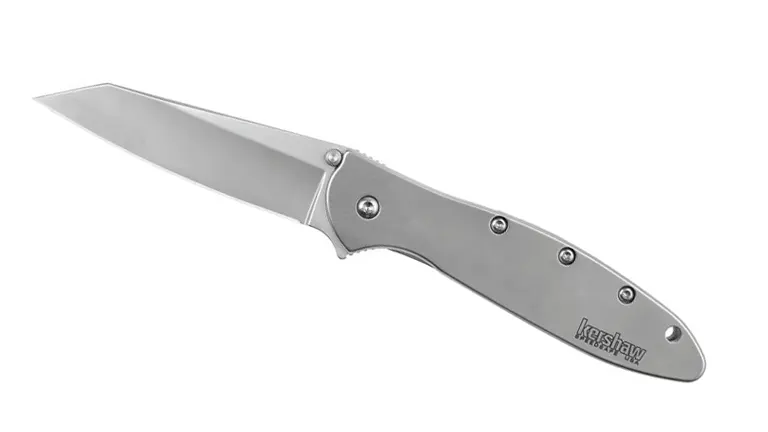
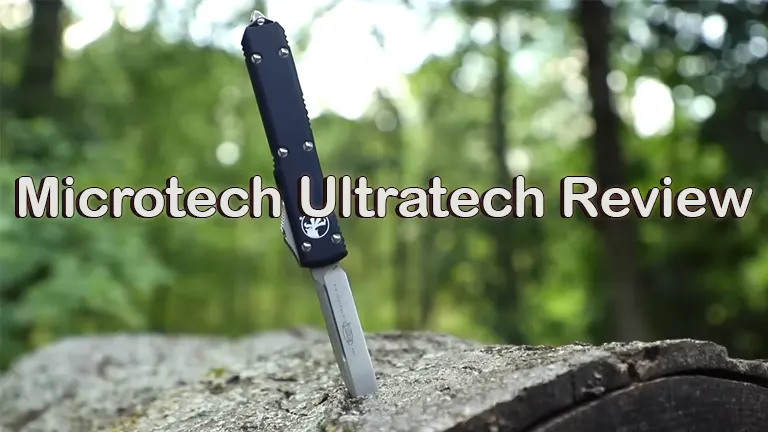
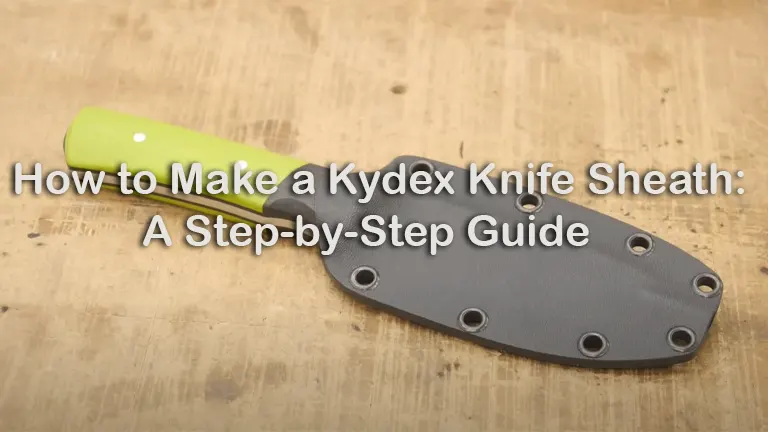
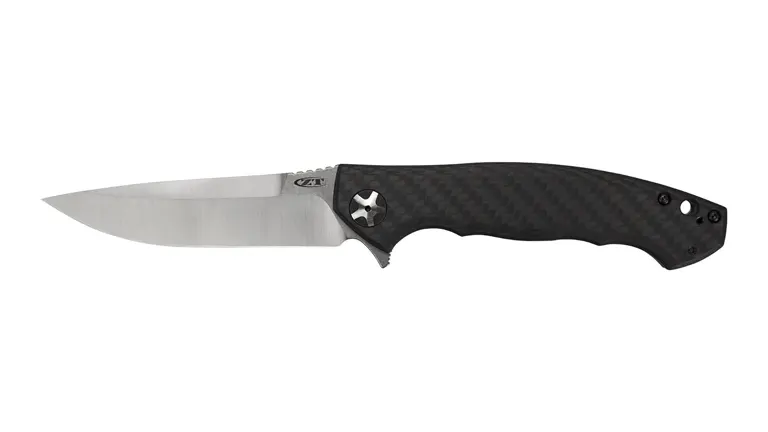



Leave your comment